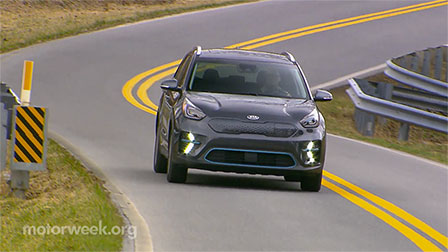April 27, 2022
Electric Vehicles Take Charge in Chicago (Text Version)
This is a text version of the video segment Electric Vehicles Take Charge in Chicago, which aired on April 27, 2022.
JOHN DAVIS: The demand for electric vehicle infrastructure is growing nationwide. But meeting that demand will require more than just equipment to deploy and funding to install it. We’ll need qualified contractors and electricians to do the actual work.
We met up with an organization that is powering Chicago’s EV charging future and setting an example for cities across the country.
Illinois is going all-in on promoting electric vehicles, with a goal to increase EV registrations from 37,000 currently, to over a million electric vehicles on the road in Illinois by 2030. To help achieve this goal, the state is providing a $4,000 rebate for select EV’s on top of existing federal incentives, along with a rebate of up to 80% for the cost of installing a charging station. Federal funding is expected to add 500,000 new chargers nationwide over the next few years.
In addition, a 2020 Chicago city ordinance requires all new residential buildings with five or more units, and commercial properties with 30 or more parking spaces, to have 20 percent of onsite parking be electric vehicle ready.
With thousands of charging outlets to be installed over the next decade, where now you typically see clusters of two to four chargers in a store parking lot, there might be dozens of units lined up in the not-so-distant future. That creates a daunting task for electrical contractors, who will need a larger skilled workforce to install them all.
Powering Chicago is the entity that bridges the International Brotherhood of Electrical Workers Local 134, with the Electrical Contractors Association, through classroom and on-the-job training and community outreach.
ELBERT WALTERS III: The contractors serve as management, so they do the hiring of electricians and managing electricians on the job sites. The relationship is that powering Chicago and the IBEW Local 134, the labor portion, actually provides the manpower, the qualified workforce.
JOHN DAVIS: The IBEW/NECA Technical Institute, in the Chicago suburb of Alsip, is already one of the most forward-thinking and well-regarded electrical training centers in the country, with a history going back more than 100 years. And there is no shortage of applicants testing for admission to the union’s 5-year paid apprenticeship training program.
GENE KENT: Our current enrollment of apprentices in the entire apprenticeship is about 1300. Right now, in school, we have about 200 apprentices every quarter, come through for their quarterly education.
JOHN DAVIS: In 2015, In-Tech debuted this renewable energy training field: a fully functional microgrid with a wind turbine, solar arrays, a bi-directional 100-kilowatt power inverter and a battery energy storage system. These are active training aids for the students that also harness and use renewable energy within the school building.
GENE KENT: What we like to do is make sure that our apprentices are taught foundational knowledge. And then we build knowledge of the industry throughout their entire apprenticeship, so that when those new cutting-edge things come into play, they only have to learn the very end-user component.
JOHN DAVIS: Reaching beyond the in-tech campus, this demonstration trailer travels to area schools and events, serving as a mobile classroom and EV ambassador. At the recent Chicago Auto Show, thousands of show visitors stepped up to ask the experts about adding EV charging equipment to their own homes or businesses.
Powering Chicago has also produced this downloadable e-book, full of information on how to plan, install and maintain electric vehicle service equipment. Car dealerships are among the many types of businesses expanding their EV charger inventories, anticipating the influx of new electrified models, soon to be hitting their showrooms and service areas.
GINA DOLLEY: The typical layout is that there’s several in service, three to four in service. Um, one in the back for delivery of the vehicles and then eventually you’re going to see them coming out front for customer-facing, customer use.
I only see it growing from this point on. Right now, it’s, I’m doing one to two a month. I think it’s going to be more. I have a feeling that we’re going to open up an EV division, and I just have guys dedicated to the installation for these units.
JOHN DAVIS: The winds of change are a coming, and forward thinking, like that shown here in the Windy City, is what it will take to keep us all charged up for the road ahead.
